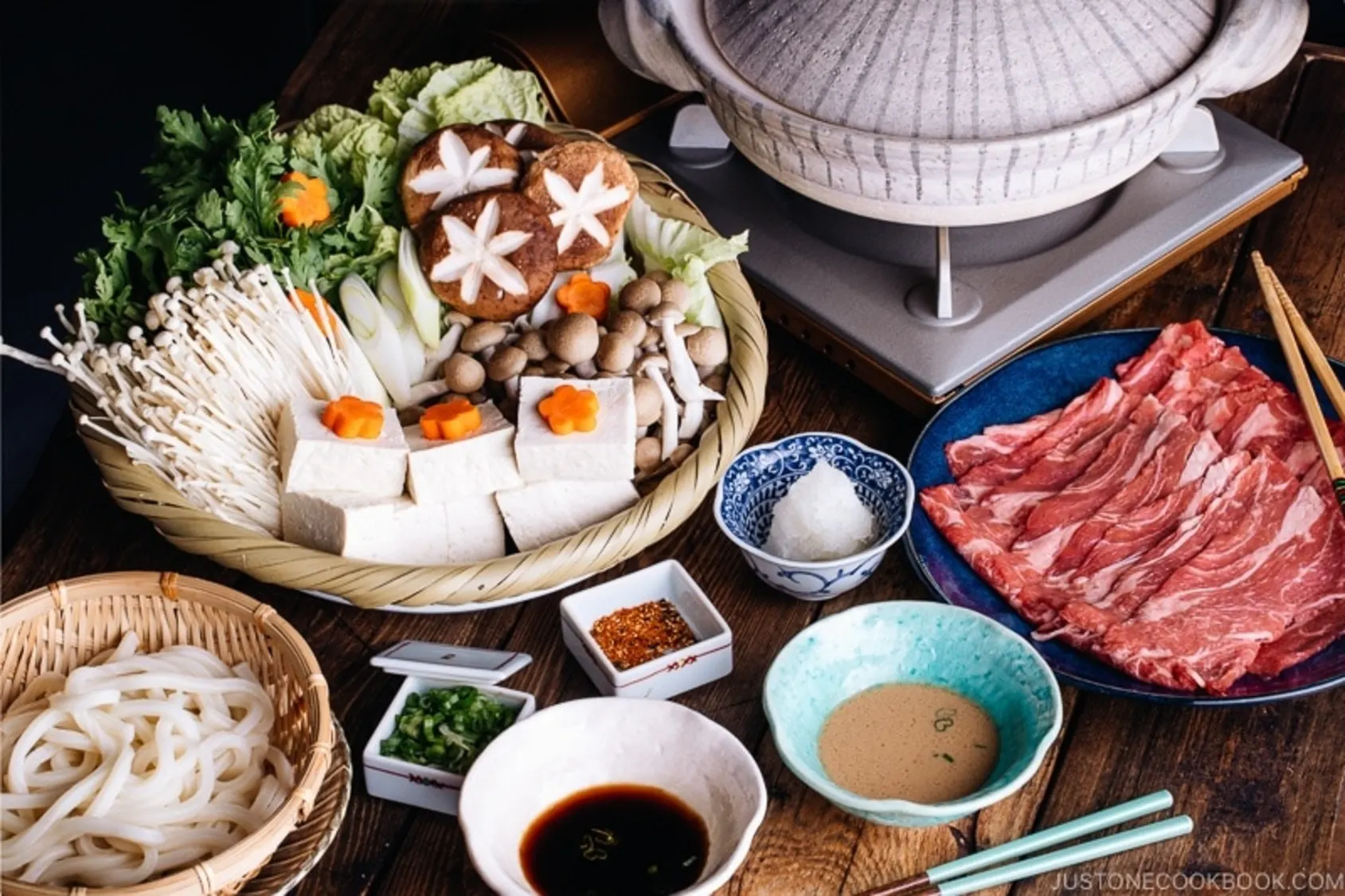
Shabu-shabu
Thinly sliced meat and vegetables cooked in hot pot.
Ingredients
- •Thinly sliced beef
- •Napa cabbage
- •Mushrooms
- •Tofu
- •Ponzu sauce
Instructions
Prepare Broth
Heat kombu dashi in pot
Cook Items
Swish meat and vegetables in broth
Shabu-shabu is a popular Japanese hot pot dish where diners cook thin slices of meat and fresh vegetables in a simmering pot of broth right at the table. The name "shabu-shabu" comes from the swishing sound made when diners stir the ingredients in the cooking broth - "shabu" means "swish" in Japanese.
This interactive dining experience originated in Osaka during the 20th century, inspired by the Chinese hot pot tradition. It quickly spread throughout Japan as people fell in love with its communal dining style and clean, healthy flavors.
To enjoy shabu-shabu, start with a pot of kombu dashi (kelp-based broth) brought to a gentle simmer. Diners then cook paper-thin slices of premium beef or pork by swishing them in the hot broth for just a few seconds until the meat changes color. Various vegetables like napa cabbage, mushrooms, and tofu are also cooked in the same broth. The cooked ingredients are typically dipped in ponzu (citrus-soy) sauce or goma (sesame) sauce before eating.
While beef is traditional, shabu-shabu can be customized with different proteins like chicken, seafood, or even all-vegetable versions for vegetarians. The broth can also be varied - some restaurants offer spicy versions or split pots with different soup bases. Many people enjoy finishing their meal by cooking udon noodles in the now-flavorful broth.
In Japan, shabu-shabu is often enjoyed at specialized restaurants where diners sit around a table with a built-in heating element. It's particularly popular during cold winter months and for social gatherings, as the communal cooking style encourages conversation and interaction.
From a health perspective, shabu-shabu is considered one of the healthier Japanese dining options. The cooking method uses minimal oil, and the dish is naturally high in protein and vegetables. However, those with dietary restrictions should be mindful of the sauces, which may contain soy, sesame, or other allergens. It's also worth noting that while the meat is typically very thinly sliced, some premium cuts can be high in fat, so moderation is key.
